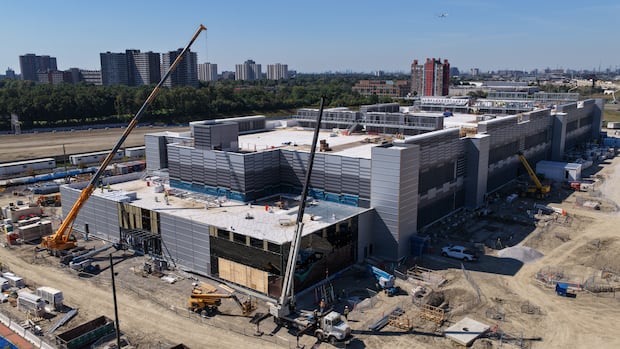During a scorching summer day, Kathryn Barnwell, a retired English professor, made her way to the mayor’s office in Nanaimo, B.C., to express her concerns about a proposed data centre. Leonard Krog, a close friend of Barnwell’s and the mayor since 2018, was advocating for the establishment of this data centre on a dry wooded lot.
Expressing her worry about the impact of the data centre on the city’s water supply, Barnwell urged Krog to reconsider the project’s implications for his political career. Krog viewed the data centre as an opportunity to bring modernization to the city’s economy, attracting future-proof job opportunities.
Previously unfamiliar with data centres, Barnwell delved into research when a nearby land was rezoned for this purpose. She now stands as a vocal opponent of the project in Nanaimo, echoing concerns shared by other locals, particularly regarding the substantial amount of municipal drinking water the data centre would require for its cooling system.

She emphasized the critical importance of water for sustaining life on Earth and criticized the prioritization of data over this vital resource. This stance aligns her with a global movement raising awareness about the environmental consequences of data centres, particularly as the tech industry invests heavily in their construction.
As Canada gears up to enter the data centre expansion wave, concerns are mounting over the lack of stringent regulations to safeguard water resources amidst the AI construction frenzy. Geoff White, from the Public Interest Advocacy Centre, highlighted the deficiency in regulatory frameworks governing data centre water usage.
The Water Consumption Dynamics of Data Centres
Traditionally unobtrusive, data centres have evolved significantly with the advent of cloud computing, growing in size and resource demands. The surge in artificial intelligence has further accelerated this trend, necessitating expansive data centres equipped with advanced cooling systems.
A 2023 study revealed that supporting AI functions like ChatGPT’s responses would require substantial water consumption for electricity generation and cooling. The exponential growth of data centres has raised global concerns as these facilities consume vast amounts of potable water for cooling purposes.
With the tech industry’s escalating water usage projections, fueled by the AI race, the environmental repercussions are looming large. Analysts anticipate substantial capital investments in cloud and AI infrastructure, surpassing $550 billion Cdn this year.
Microsoft’s Data Centre Expansion in Canada
Leading the charge in AI-capable data centre development in Canada, Microsoft has undertaken significant projects across the country. With investments exceeding $1 billion, Microsoft is transforming various sites into state-of-the-art data centres to power innovative AI products.
Despite municipal approvals for substantial water usage, Microsoft asserts that its Canadian data centres will implement eco-friendly design features to minimize water consumption. The company’s focus on utilizing outdoor air and recycled rainwater for cooling aligns with sustainable practices, aiming to mitigate environmental impacts.
Alistair Speirs, Microsoft’s Azure global infrastructure head, emphasized the shift towards water-efficient cooling methods in data centre construction. The company’s strategic approach leverages Canada’s cold climate for energy-efficient cooling operations.
Amidst the escalating concerns over data centre water consumption worldwide, Microsoft’s sustainable practices in Canada serve as a model for industry stakeholders. The company’s commitment to transparent water usage reporting and eco-friendly cooling technologies underscores the imperative of responsible resource management.



